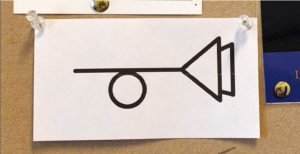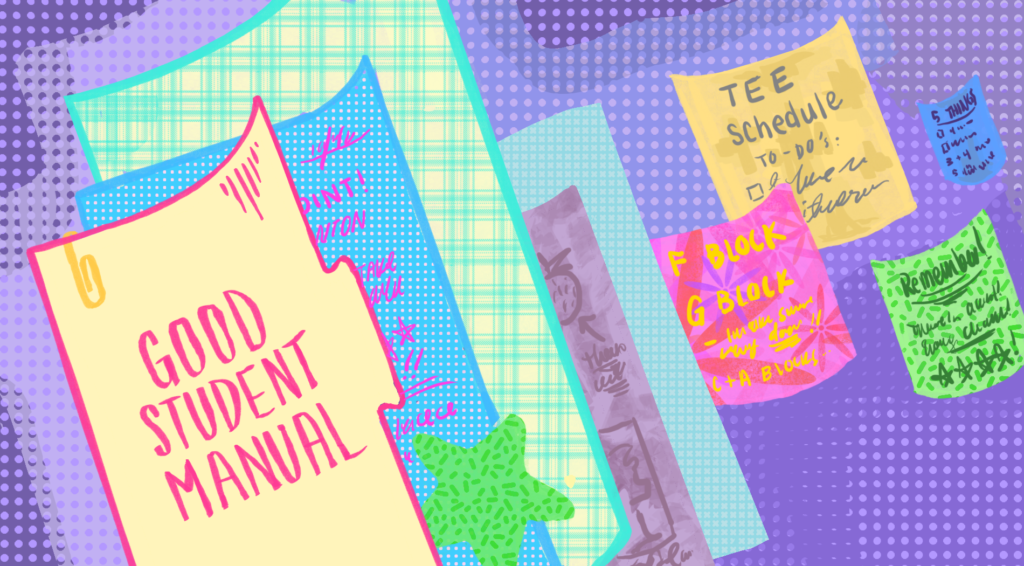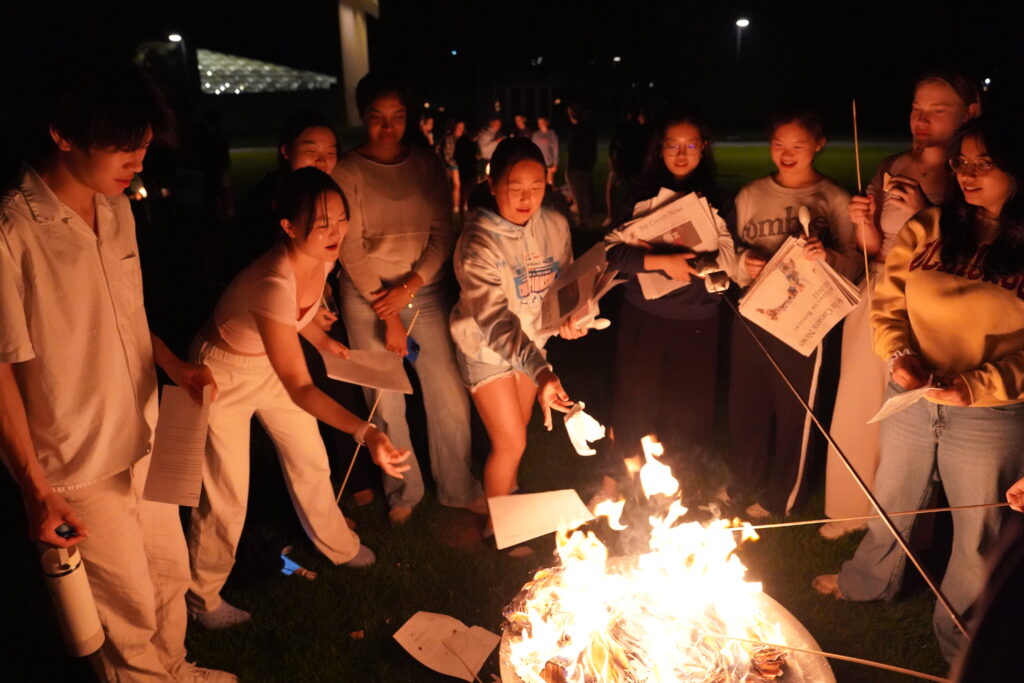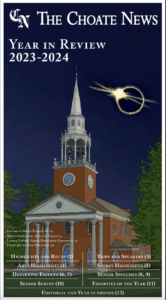
One of many symbols around campus that students in Mr. Joe Lampe’s American literature course must find for a scavenger hunt. Photo by Victoria Esquibies/The Choate News
English teacher Mr. Joe Lampe has strayed from having his students use traditional methods of literature analysis such as class discussions, thesis-centred essays, or tests. As his junior English class is reading The Crying of Lot 49 by Thomas Pynchon, Mr. Lampe has decided to go for something a little more exciting: a scavenger hunt.
The Crying of Lot 49 centers on a woman named Oedipa Maas, a bored housewife from California mysteriously named the executor of her ex-boyfriend’s will. He was a fabulously rich real estate mogul, and as she looks into his affairs, she uncovers a hidden society called the Tristero. As she goes about her everyday life, she starts seeing signs connected with the Tristero. At first, she recognizes the graffiti on the walls of a bathroom and then watches a play written in the 1600s that references the society. This pattern continues until she sees the signs everywhere, and that is where Mr. Lampe’s idea began.
Mr. Lampe got an iPad grant to develop this unit. He said, “I designed it as a game that [the students] would play where they could earn points to advance through the game, and it involves augmented reality.”
It all began with an encoded email. Mr. Lampe explained that students “had to break the code, which said, ‘There’s a secret group that has hacked the gradebook and if you figure this out, you can get an A.’ The premise was that there’s a secret organisation, the Tristero — ‘We’re here at Choate; we want you, but you have to prove yourself.’”
The game develops from there with a combination of the encoded emails and another technological source. Utilizing an app called HP reveal, students are able to look at photos hidden around campus through their cameras and watch them transform into video clues. Mr. Lampe described an example of one of the clues: “A little video plays that says: find five quotations in the text that are relevant to theme, and that’s worth this many points.”
The scavenger hunt is divided into three levels, which Mr. Lampe compares to the steps of writing an essay. “It was designed as a way to scaffold out the writing process. The first level is all about the prewriting skills that you would need to start the process of thinking about how to write a paper. [This includes] finding important quotations, looking up vocabulary words, or identifying allusions in the text. The second level is all about writing an outline, developing a thesis statement, beginning to craft body paragraphs. The third level was about revisions. It was a way to gamify the writing process.”
Beyond being a lesson on how to write a paper, the game ties in with a theme of the book. Mr. Lampe articulated on how Oedipa’s journey could represent the student’s process: “Throughout the [book] she’s not sure, and neither is the reader about whether she’s just paranoid about this secret organization. It could be that she’s stumbled upon this counterculture way that people have of communicating in secret. A lot of it ends up being about the nature of communication, and how normal society stifles that.”
He continued, “It’s also possible that this is all a plot that her ex-boyfriend created for her to bring her out of her bored housewife existence and recognize a wider world. And that was the idea, to get the students involved in an alternate reality game. The idea with the augmented reality was that it’s these things that you’re walking by every day, but if you open it with the app, it’s a clue or a task.”
An additional aspect of the puzzle is the small symbols tacked on bulletin boards around campus, which have raised more than a few questions from teachers and students alike. The symbols are the same ones that Oedipa sees around her in the novel — in a ring, a tattoo, on the wall of the shop — representing the Tristero.
In the book, the Princely House of Thurn and Taxis, a family of German nobility, has a monopoly on the postal service, which is a true historical fact. Their symbol is the post horn, and the Tristeros, their rivals, choose a post horn with a mute in it, which are the symbols posted around campus. Mr. Lampe put the symbols up before the class read the book as a way to help his students experience the symbols in the same way Oedipa does. Many of the symbols contained the first clues: “There is one up on the stairs to the dining hall that if you look at it on the app, it turns into a painting by a painter who’s referenced in the book.”
The game is on week two of at least three and is a raging success so far. Di’Anna Bonomolo ’20, a student in his class, commented, “It’s a way to keep the class interesting after reading this complicated book. The scavenger hunt is pretty cool, especially since he took the time to make everything.” Although Mr. Lampe mentioned both the successes and problems with the game, Bonomolo recommends that he does it again, calling the game “spontaneous and fun.” Based on current reviews, it’s sure to be popular with Mr. Lampe’s future students.




